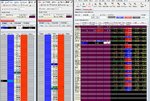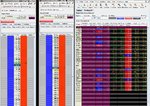gulam
Member
- Messages
- 92
- Likes
- 5
Grey1 said:Hi
The best entry always has to be when the exhaustion engine is OS in both DOW AND STOCK .. This is an ideal situation . How ever if you have a market OS but Stock not OS yet then you can still consider to go LONG
Reverse every thing for SHORT
PS:--
Remember this . Exhaustion engine is your best mate. People including myself always used to go long after second pull back from the high . Now a days we have moved on to more pro approach as described above
Grey1
Where would you put your stop if you took the trade on the above scenario ?


